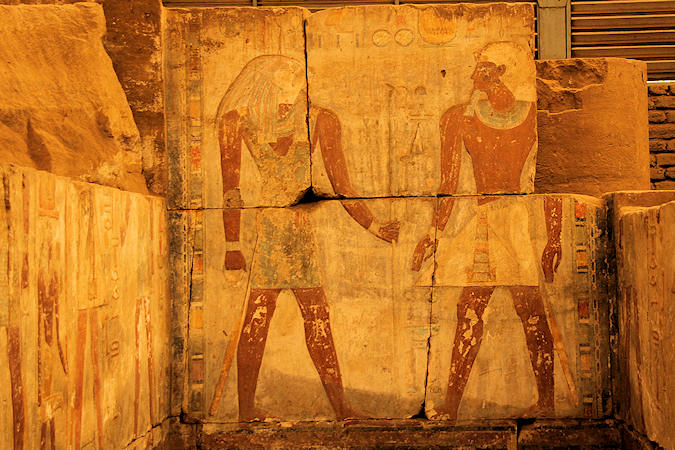Aksha, Sudan
The Aksha Temple is an ancient Egyptian temple which was rebuilt in Khartoum National Museum partially.
The temple was built around 1250 BC by Ramses II in the far north of present-day Sudan (a few kilometers south of Faras ) on the west side of the Nile. He was the "living image of Ramses II in Nubierland " and dedicated to the gods Amun and Re beside it. On the temple walls sacrifices of the king are shown before his own deified form multiple times. Also shown are the sons of the king of Kush, Heqanacht and Mesui in the worship of the king 's name.
The location of the temple was not well chosen, since it was only a few inches above the high tide of the Nile. This resulted in a penetration of the bottom wall layers and the crystallization of salts on the surface of the rock results in which the stones were worn down over the centuries. In addition, the temple has suffered considerably stone robbery by the local population. Why was little more to see some of the temple in the 20th century. Through the excavations in 1963, were initiated as a result of the construction of the Aswan Dam, but the floor plan of the temple was found. Here we discovered a relatively well-preserved temple wall, which is the western wall of the pillar court. It is carved along the entire length of a list dominated by Ramses II foreign nations. It was considered to be mineable and archaeologists from the University of Ghana sawed the wall into individual blocks which are subsequently brought to Khartoum. There was a wall in the museum garden of the National Museum, protected by a pavilion, rebuilt.
Near the temple cemeteries of the A-, C-, and X group were discovered. In addition, they found parts of the Qubanstele and the stele with the " blessings of Ptah ".










